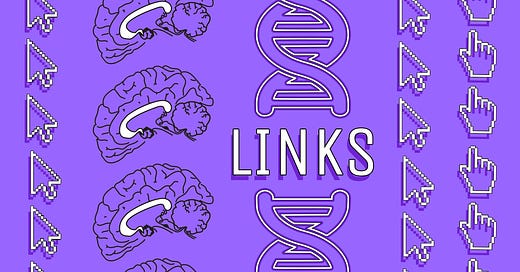LINKS - July 5th, 2023
Welcome to LINKS — my attempt to provide Rhapsody readers with five interesting stories that tell us something about what it means to be human. LINKS is published every Wednesday. Have a link you want to share? Drop it in the comments.
Microscopic evidence of plant technology in Philippines 39,000 years ago
By Evrim Yazgin, Cosmos Magazine
“Unlike stone tools, prehistoric technology that uses plant fibres (like textiles and woven baskets) rarely survive very long in the archaeological record before breaking down. This is especially true in the tropics.”
Why Nahua Pilgrims Carry Thousands of Papers Up Sacred Peaks
By Alan Sandstrom & Pamela Effrein Sandstrom, Sapiens
“But these spirits do not exist in a hierarchy; nor do they each maintain a discrete domain of control. Rather, every being and object in the cosmos is composed of identical sacred substance. The many spirits are but aspects or manifestations of this uniform singularity. That’s why the mutable Nahua spirits often lose their individual identities by merging or blending into one another, and people can readily incorporate novel entities such as Catholic saints to address new circumstances.”
Early Women Were Hunters, Not Just Gatherers, Study Suggests
By Margaret Osborne, Smithsonian Magazine
“Their analysis revealed that regardless of maternal status, women hunted in 50 of these societies—or about 79 percent. And more than 70 percent of female hunting appeared to be intentional—rather than opportunistically killing animals while doing other activities, per the study. In societies where hunting was the most important activity for subsistence, women participated in hunting 100 percent of the time.”
Brain Waves Synchronize when People Interact
By By Lydia Denworth, Scientific American
“But how does synchrony happen? Much about the phenomenon remains mysterious—even scientists occasionally use the word ‘magic’ when talking about it. One straightforward explanation could be that coherence between brains is a result of shared experience or simply a sign that we are hearing or seeing the same thing as someone else. But the newest research suggests that synchrony is more than that—or can be. Only by looking into the brains of all individuals involved in an interaction, says neuroscientist Weizhe Hong of the University of California, Los Angeles, can we start to ‘fully understand what is going on.’”
The societies proving that inequality and patriarchy aren't inevitable
By Michael Marshall, New Scientist
“Emerging evidence from the study of human societies past and present reveals a ‘staggering kaleidoscope of social experimentation’, says David Wengrow at University College London. It is tempting to fit societies into neat categories such as hunter-gatherer versus complex, egalitarian versus hierarchical and democratic versus authoritarian. It turns out to be not that simple. What’s more, a society can change drastically if its members choose.”



